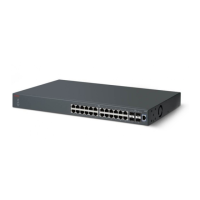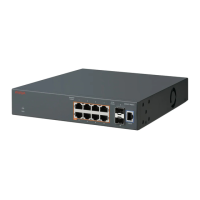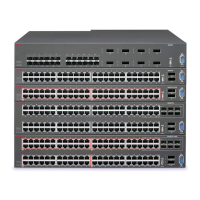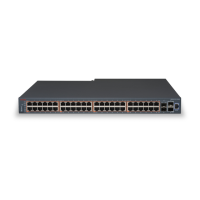Access Port Utilization
Although access ports are typically connected using a Gigabit Ethernet access port, the average
peak unitization of that port is typically less than 1Gbps. Therefore, large stack designs must
consider the peak utilization of connected users requiring IP data, voice, and video services during
peak hours.
Network designs can support up to 384 access ports on stack-enabled switches. This allows for half
of the 80Gbps stacking bandwidth to be utilized for access ports, while leaving the greater of
40Gbps available for servicing those access ports using the switch trunks or uplinks.
Trunk / Uplink Port Utilization
The switch provides MLT and LAG options so that redundant links can use separate hardware
platforms in a stack to provide the highest level of resiliency. These types of connections can
aggregate the available bandwidth over the trunk or uplink.
You must consider the aggregate bandwidth of these trunks and uplinks to ensure they do not
exceed the capacity of the stacked bandwidth. Therefore, you must consider not only the trunk or
uplink peak utilization requirements, but also the access port aggregate utilization.
In configurations where voice and data services are to be delivered on the access ports to a large
numbers of users, you must allocate sufficient bandwidth to the trunk and uplink ports to support the
access port traffic. In these situations, Avaya recommends that you limit the aggregate of MLT and
LAG port utilization to 40Gbps. This amount represents any combination of SFP, and or SFP+
interfaces while also adhering to the MLT and LAG scaling limitations.
You can configure QoS on the switch to manage traffic during periods of over-subscription during
peak hours.
Considerations for 8 unit stacks of ERS 3549GTS, ERS 3549GTS-PWR+
Design Element
Design Consideration
Uplink, MLT, LAGs, SFP+ interfaces Every other switch in stack
Stacking capacity – 8 switches 80Gbps
Uplink aggregate
1
- 8 switches 40Gbps – 4 SFP+
Access port aggregate
1
- 8 switches 40Gbps
Note:
1
Designs may vary and aggregate throughput may vary depending on access or trunk port
utilization required by the design. These are recommendations based on the use case defined
above for a typical UC-enabled office.
Auto Unit Replacement
The Auto Unit Replacement (AUR) feature enables users to replace a unit from a stack while
retaining the configuration of the unit. This feature requires the stack power to be on during the unit
replacement.
Getting started fundamentals
28 Getting Started with Avaya ERS 3500 Series July 2015
Comments on this document? infodev@avaya.com

